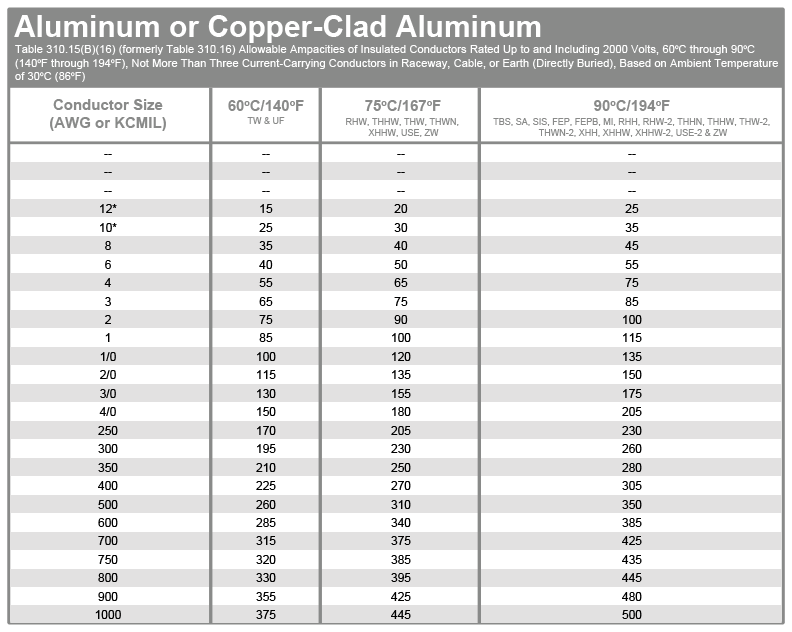

Aside from the two, we’ve listed other factors for you to consider: 1.
#4 awg ampacity code
We will discuss the two factors in detail in the succeeding section, but we’ve listed the current ratings from the US National Electric Code below. Wire material and insulating materials are the most important factors when rating 4 gauge wires.


Notable ones are the material and the length of the wire, the type of insulation, the ambient temperature, and the application. Maximum Current Rating or Ampacity of 4 Gauge WireĪs we mentioned earlier, the maximum amperage a 4 gauge wire can carry depends on various factors.
Maximum Current Rating or Ampacity of 4 Gauge Wire. That will depends on your thermal budget for the cells, which will of course be heating themselves at 135/270 A. If you are happy for the batteries to absorb some heat from the connecting wires, then this will increase your rating of the ampacity of the wires. Note that short wires are effectively heat-sunk by the battery tags/faces. 'Short wires for battery packs' are specifically mentioned, in that you should do your own tradeoffs for that application. You are told the ratings are conservative, so it sounds like you could get away with some stretching. It's not even clear what the single strand rating really means in your context. Double the mass of the wires, double the heat that can be absorbed.īut as the description says, those are guidelines. If it's based on a very short term adiabatic (no time for heat from the wires to diffuse into the environment) pulse, then yes. As the thermal heatsinking capacity has not doubled, the ampacity rating will not double. Both heat-producing wires are sharing the same thermal environment, heating the same air-space, heating the same battery faces. If it's based on the long term temperature rise, then no. Will it be 2x the rating? It depends on what the 'rating' is based on. Two parallel strands of wire will have a higher rating than a single strand. Contact your local electrician to find out what is legal! NOTE: For installations that need to conform to the National Electrical Code, you must use their guidelines. For short lengths of wire, such as is used in battery packs you should trade off the resistance and load with size, weight, and flexibility. The Maximum Amps for Chassis Wiring is also a conservative rating, but is meant for wiring in air, and not in a bundle. The Maximum Amps for Power Transmission uses the 700 circular mils per amp rule, which is very very conservative. In careful engineering the voltage drop, insulation temperature limit, thickness, thermal conductivity, and air convection and temperature should all be taken into account. As you might guess, the rated ampacities are just a rule of thumb. In other words, how many amps can it transmit? The following chart is a guideline of ampacity or copper wire current carrying capacity following the Handbook of Electronic Tables and Formulas for American Wire Gauge. From the chart you linked to, I'll reproduce the definition of ampacity, with my own highlightsĭefinition: ampacity is the current carrying capability of a wire.







 0 kommentar(er)
0 kommentar(er)
